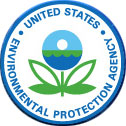
United States Environmental Protection Agency
The July 15, 2008 State Water Resources Control Board (SWRCB) meeting resulted in the approval of a Resolution which might allow Fillmore to borrow money for some water-related projects at a reduced annual rate.
The Fillmore Gazette received a publicity fax from Ventura County Supervisor John K. Flynn stating that the SWRCB had approved extended term financing for El Rio and Piru. His fax indicated that the EPA still had to approve the loans and that the loans were not available yet. He was probably referring to the following Resolution listed on the SWRCB Meeting Agenda as: "Consideration of a Resolution granting authority to the [SWRCB's] Executive Director to apply to the [U.S. EPA] to implement an Extended Term Financing program as part of the Clean Water State Revolving Fund (SRF) Program." Judie Panneton at the SWRCB verified that the Resolution had been approved without any modifications. This Resolution might apply to the City of Fillmore.
An attachment to the SWRCB Meeting Agenda explains: "The SRF Program is a joint federal/state funded program designed to help California meet the goals of the Federal Clean Water Act (CWA). The SRF Program provides below market rate financing for waste water and water recycling system improvements, correction of non-point source and storm water pollution problems, and implementation of estuary enhancement programs." This language seems to indicate that some of Fillmore’s storm drain and chloride problems might be addressed with SRF funds, but the SRF Fact Sheet specifies, “To be eligible for SRF loans, projects must be on the statewide SRF Priority List.” A preliminary version of this list, available online, includes the following projects in Fillmore: Fillmore Water Recycling Plant Replacement, Recycled Water Treatment Facility, Recycled Water Distribution System, and Desalting Plant Construction Project. The list also includes projects in Piru and El Rio.
According to the Agenda attachment, "Currently the SRF Program only finances projects for a maximum term of twenty years. CWA and the California Water Code (CWC), however, allow the Program to offer financing on longer terms if approved by U.S. EPA. Extended Term Financing (ETF) has been approved by U.S. EPA for several other states nationwide to reduce the debt service for disadvantaged communities." The Executive Director of the SWRCB is expected to submit the application for ETF to the U.S. EPA in late July, according to Panneton. The Agenda attachment notes, "Increasing the term of SRF financing from 20 to 30 years reduces the annual payment by approximately 25 percent."
There is a catch. As the Agenda attachment states, "ETF will only be offered to small, disadvantaged communities." The SWRCB defines small as "a community with a population of 20,000 persons or less." A report from the California Department of Finance indicates that as of January 1, 2008, Fillmore's population was almost 15,650 persons.
It is unclear whether Fillmore would qualify as disadvantaged under the SWRCB's definition, which will be used on its application to the U.S. EPA. There are two ways Fillmore could qualify as disadvantaged; both depend on the calculation of Fillmore's Median Household Income (MHI). According to the U.S. Census, Fillmore's MHI was $45,510 in 2000. The first way is if Fillmore has an MHI "equal to or less than 80 percent of the statewide MHI". City-Data.com estimates that in 2005 Fillmore's MHI was $51,000 and California's was $53,629. Those numbers are inconclusive, but suggest that Fillmore's MHI is closer to 95% of California's. The second way that Fillmore could qualify as disadvantaged would be if Fillmore paid "at least four percent of its MHI toward waste water rates". Without recent data and specific instructions for calculating waste water rates, it is difficult to determine whether Fillmore qualifies. In any case, the attachment stipulates, "Communities with an MHI greater than 80 percent of the statewide MHI applying for ETF solely on the basis that they pay more than four percent of their MHI on waste water rates must receive approval for ETF on a case-by-case basis at the discretion of the State Water Board."
According to Fillmore Finance Director Barbara Smith, the City is currently paying back a loan from the SRF. It is a no-interest loan that the City received in 1993 and will finish paying off in 2014. Smith believes that the City might consider borrowing money from the SRF for NPDES and the Water Softening Plant, but stressed that there have not yet been any discussions about how to finance those items. She implied that such discussions would be premature at this point.
Public Works Director Bert Rapp was on vacation and not available for comment.

